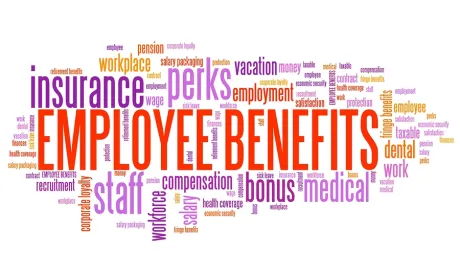HIGHLIGHTS OF TAX REFORM
| RETIREMENT PLAN PROVISIONS | ||
| Provision | Explanation of Current Provision | Final Provision |
| Re-characterization of contributions to traditional IRAs and Roth IRAs. | IRA contributions to one type of IRA (either traditional or Roth) may be recharacterized as a contribution to the other type of IRA. | Repeals the special rule that allows IRA contributions to one type of IRA (either traditional or Roth) to be recharacterized as a contribution to the other type of IRA, only as it applies to a conversion contribution establishing a Roth IRA during a taxable year, then recharacterizing the contribution as a traditional IRA (thereby unwinding the conversion). Recharacterization is otherwise still permitted. For example, an individual may make a contribution for a year to a Roth IRA and, before the due date for the individual’s income tax return for that year, recharacterize it as a contribution to a traditional IRA. An individual may still make a contribution to a traditional IRA and convert the traditional IRA to a Roth IRA, but the provision precludes the individual from later unwinding the conversion through a recharacterization. This provision will be effective for plan years beginning after December 31, 2017. |
| Rollover period for outstanding loans at termination. | When a participant with an outstanding plan loan separates from service, the outstanding loan balance will be considered an actual distribution and eligible for rollover within 60 days of distribution. A plan must have specific language to allow the rollover of outstanding loans. | Extends the period during which a participant can roll the outstanding loan amount over to an IRA or Plan to the due date of the Participant’s tax return including extensions. The provision applies only to Participants who cannot timely repay an outstanding loan from a qualified retirement plan, a 403(b) plan, or a governmental 457(b) plan solely by reason of the termination of the plan or the failure to meet the repayment terms of the loan due to the employee’s separation from service. The provision is effective forplan years beginning after December 31, 2017. |
| HEALTH AND WELFARE PROVISIONS | ||
| Provision | Explanation of Current Provision | Final Provision |
| The individual mandate penalty required by the Affordable Care Act (“ACA”). | The ACA generally requires individuals acquire minimum essential coverage or pay a penalty for failure to maintain the appropriate coverage. | Reduces the individual mandate penalty amount to zero. The reduced penalty amount is effective January 1, 2019. |
| Employer credit for paid family and medical leave. | Employers may not claim a credit for compensation paid to employees on Family and Medical Leave Act (“FMLA”) leave. | Creates a business tax credit (for 2018 and 2019 only) for employers who pay employees while they are out on FMLA leave. The employer must satisfy certain criteria to be eligible for the credit. For example, the amount paid must be no less than 50% of the employee’s original pay and the paid leave is in addition to any vacation and sick time used and/or paid leave mandated by a state or local government. The change is effective forwages paid after December 31, 2017. |
| FRINGE BENEFIT PROVISIONS | ||
| Provision | Explanation of Current Provision | Final Provision |
| Deductions by employers for expenses for entertainment, amusement, and recreation. | Deductions by taxpayers for trade or business expenses up to 50% of otherwise deductible expenses. Also, employers may deduct expenses for employer-provided fringe benefits including qualified transportation, on-premises athletic facilities, and de minimis fringe benefits. | Eliminates almost all deductions for expenses regardless of the relation to the taxpayer’s trade or business including the deduction for any qualified transportation fringe benefit. The taxpayer may still deduct 50% of the food and beverage expenses associated with operating the trade or business including meals for employees on work travel. The provision is generally effective for amounts paid or incurred after December 31, 2017. The elimination of the deduction for meals provided by the employer to employees on or near employer premises for the convenience of the employer begins in tax years after December 31, 2025. |
| The qualified bicycle commuting reimbursement exclusion from employee gross income. | Included in the Qualified Transportation Fringe Benefit. Reimbursements of up to $20 per month are excludible from employee gross income. | Eliminates the qualified bicycle commuting reimbursement exclusion from employee gross income for tax years beginning after December 31, 2017 and sunsets after December 31, 2025. |
| Deductibility of employee achievement awards and exclusion from taxable wages. | Employers are able to deduct the cost of employee achievement awards, up to certain limited amounts, from wages subject to FIT, FITW, FICA, and FUTA. Employers are also permitted to provide cash, gift cards, gift coupons, etc. Employee achievement awards deductible by the employer are excludible from employee gross income. | Allows only “tangible personal property” from a limited array of employer approved items to be considered a deductible employee achievement award. Defines “tangible personal property“ in the context of employee achievement awards to exclude cash, cash equivalents, gift coupons or certificates as well as vacations, meals lodging or tickets to theater or sporting events, stocks, bonds securities or other similar items. It appears to codify Prop. Reg. §1.274-8(c)(2). Effective for taxable years beginning after December 31, 2017. |
| Exclusion of qualified moving expense reimbursement from employee gross income. | Employees and employers may exclude employer provided moving expense reimbursements from gross income. | Eliminates the exclusion of moving expense reimbursement from employee gross income. Specifies an exception for the armed forces on active duty and moving because of a military order and in connection with a permanent change of station. Effective for taxable years beginning after December 31, 2017, and sunsets after taxable year ending December 31, 2025. |
| EXECUTIVE COMPENSATION/NQDC PROVISIONS | ||
| Provision | Explanation of Current Provision | Final Provision |
| Deductibility of Excessive Employee Remuneration. | Employers may deduct up to $1 million per year per executive for compensation paid or accrued to certain top executives at publicly traded companies. Certain types of compensation are excluded from determining whether the $1 million limit has been reached, including performance-based compensation and commissions. | Expands the definition of compensation subject to the $1 million limitation by eliminating the exception for the performance based and commissioned based compensation. If an individual is a covered employee for any tax year commencing after 2016, her compensation would remain subject to the deduction limit in subsequent tax years, even if she is no longer a covered employee or the amounts are paid to a beneficiary. The provision includes a transition rule allowing an exception to the new definition for compensation under a written binding contract in effect on November 2, 2017. Certain material modifications of a contract existing on November 2, 2017, would negate the exception allowed by the transition rule. Effective for taxable years beginning after December 31, 2017. |
| Excise tax on Excessive Executive Compensation for Tax-Exempt Employees. | Deduction limits generally do not affect a tax-exempt organization. | Imposes a 21% excise tax on compensation in excess of $1 million for each of the top five highly compensated employees paid by certain tax-exempt organizations. The excise tax also applies to parachute payments payable on separation from service in excess of three times the prior average annual compensation. The definition of “substantial risk of forfeiture” is based on section 457(f)(3)(B), which applies to ineligible deferred compensation subject to section 457(f), meaning the tax could apply to all compensation vested even if not yet received. The provision exempts compensation paid to employees who are not highly compensated employees (within the meaning of section 414(q)) from the definition of parachute payments. For determining a covered employee, compensation paid to a licensed medical professional which is directly related to the performance of medical or veterinary services is not taken into account, whereas compensation paid to such professional in any other capacity is taken into account. Effective for tax years beginning after December 31, 2017 (without a transition period). |
|
PROVISIONS ULTIMATLY UNCHANGED |
||
| RETIREMENT PLAN PROVISIONS | ||
| Non-Discrimination testing rules for certain “soft-frozen” defined benefit (“DB”) plans and defined contribution (“DC”) plans. | A frequent result of the employer provided contributions to a DC plan to off set the reduction of a DB benefits due to the freezing of the DB plan, is the failure of non-discrimination testing in both the DB and DC plans. | |
| Hardship Distributions. | IRS regulations require a 6 month suspension of employee deferrals following a hardship distribution. Employees must exhaust all other funding options before taking a hardship distribution. The accounts available to an employee for a hardship distribution include only the employee deferrals, excluding earnings, and any rollover funds. | |
| Minimum age at which one may receive an in-service distribution from a DB plan or a governmental 457(b) plan. | DB plans may allow for in-service distributions at age 62. Governmental 457(b) plans may allow for in-service distributions at 70 1/2. | |
| HEALTH AND WELFARE PROVISIONS | ||
| Archer Medical Savings Accounts (“MSA”). | Contributions to an Archer MSA are either deductible if made by the employee or excludible if made by the employer. | |
| FRINGE BENEFIT PROVISIONS | ||
| Employer provided child care credit. | Employers may claim a credit for qualified employer provided child care expenses. | |
| Exclusion of employer provided dependent care assistance up to $5,000 from employee gross income. | Employees may exclude from gross income up to $5,000 for employer provided dependent care assistance. It is also excludable from wages for employment tax purposes. | |
| Exclusion of adoption expenses paid or reimbursed through an employer sponsored adoption assistance program from employee gross income. | Employees may exclude employer provided adoption assistance reimbursements through an adoption assistance program from gross income. | |
| Exclusion of employer provided housing benefits from employee gross income and wages for employment tax. | Employees may exclude the value of housing provided by the employer for the convenience of the employer from gross income. The employer may exclude it from the employee taxable wages for employment tax purposes. | |







 />i
/>i


